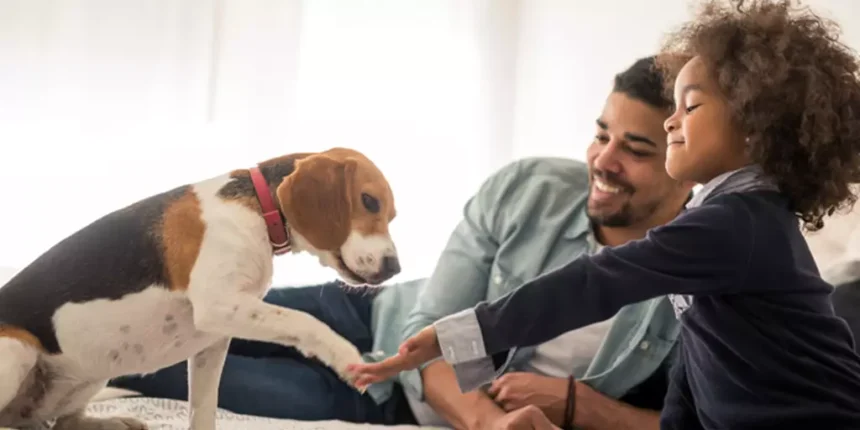Introducing your pet to children can be a rewarding experience for both the animal and the kids. However, ensuring these interactions are safe and positive requires careful preparation and understanding your pet’s behavior. In a bustling city like Atlanta, where pets and families often coexist in close quarters, it’s crucial to take the necessary steps to prepare your pet for interactions with children.
Properly introducing and acclimating your pet to children can help prevent accidents and foster a harmonious environment. If any issues arise during these interactions, seeking legal advice from professionals like Piasta Walker Hagenbush LLC in Atlanta can provide valuable guidance and support.
Understanding Your Pet’s Temperament
The first step in preparing your pet for interaction with children is understanding your pet’s temperament. Pets, like people, have unique personalities and varying levels of comfort in different situations. Some pets are naturally more social and tolerant, enjoying the company of children and thriving in busy environments. Others may be more anxious or territorial, preferring calm and familiar settings. Observing your pet’s reactions to stimuli such as loud noises, sudden movements, or unfamiliar people can help you gauge how they might respond to children.
If your pet exhibits signs of fear or aggression, such as growling, hissing, or hiding, it is essential to take these behaviors seriously. Such responses indicate that your pet is uncomfortable and may not react well to the unpredictable nature of children’s behavior. In these cases, it may be best to consult a veterinarian or a professional animal behaviorist. These experts can provide strategies to help your pet become more comfortable around children and address any underlying behavioral issues. They might suggest gradual desensitization techniques, positive reinforcement training, or changes to your pet’s environment to reduce stress.
Gradual Introduction to Children
Introducing your pet to children gradually is key to ensuring a positive experience. Start with short, supervised interactions, allowing your pet to become familiar with the presence of children at their own pace. Keep initial meetings calm and controlled, avoiding sudden movements or loud noises that could startle your pet.
Encourage children to approach your pet slowly and gently, teaching them to respect the animal’s space. Rewarding your pet with treats and praise for calm behavior during these interactions can help reinforce positive associations with children.
Teaching Children How to Behave Around Pets
Educating children on interacting with pets properly is crucial for a safe and positive relationship between them. Here are some key points to consider:
- Approach Calmly: Teach children to approach animals calmly and slowly to avoid startling them. Instruct them to avoid pulling on tails or ears, which can hurt the pet and lead to defensive reactions.
- Avoid Disturbing Pets: Children should learn not to disturb pets while eating or sleeping, as this can make them feel threatened or annoyed.
- Emphasize Gentle Touch and Respect: Teach the importance of gentle petting and handling to prevent accidental harm to the pets. Encourage children to respect and understand the pet’s needs and moods.
- Supervision: Always supervise interactions between pets and younger children who may not fully understand how to behave around animals. Be ready to intervene if necessary to ensure the safety of both the child and the pet.
Creating a Safe Space for Your Pet
Providing your pet with a safe space where they can retreat if they feel overwhelmed is essential. This can be a quiet room, a crate, or a designated area where your pet can relax away from the activity. Ensure this space is off-limits to children, giving your pet a place to retreat and feel secure.
Respecting your pet’s need for space and downtime can help reduce stress and prevent negative interactions. Allowing your pet to choose when they want to interact with children can foster a more positive and trusting relationship.
Socialization and Training
Socialization and training are key components in preparing your pet for interactions with children. Exposing your pet to different environments, people, and experiences can help them become more adaptable and less fearful. Enrolling your pet in obedience classes can also provide valuable training and reinforce good behavior.
Basic commands such as sit, stay, and leave it can be particularly useful during interactions with children. Training your pet to respond reliably to these commands can help manage their behavior and ensure a safer environment for everyone involved.
Recognizing Stress Signals
Being able to recognize the signs of stress in your pet can help you intervene before a situation escalates. Common stress signals include panting, pacing, yawning, lip licking, and avoiding eye contact. If you notice any of these signs, it may be best to remove your pet from the situation and give them time to calm down.
Understanding your pet’s body language and stress signals can help you create a more comfortable environment and prevent negative interactions. Providing a safe and supportive space for your pet is crucial for their well-being and the safety of everyone involved.
Building a Trusting Relationship
A trusting relationship between your pet and children is essential for harmonious interactions. Encourage regular, positive interactions that are enjoyable for both the pet and the children. Activities like gentle petting, playing with toys, and offering treats can help build trust and positive associations.
Consistency is key in building trust. Ensure the pet and the children understand and respect each other’s boundaries. Over time, these positive interactions will strengthen the bond, making future interactions smoother and more enjoyable.
Encouraging Positive Reinforcement
Using positive reinforcement techniques can significantly improve your pet’s behavior around children. Reward your pet with treats, praise, and affection when they exhibit calm and friendly behavior during interactions. Positive reinforcement helps your pet associate children with positive experiences, reducing anxiety and promoting good behavior.
Consistently applying positive reinforcement can also teach your pet what is expected of them. This method not only helps in creating a safe environment but also enhances the overall relationship between your pet and the children, ensuring enjoyable and stress-free interactions.






